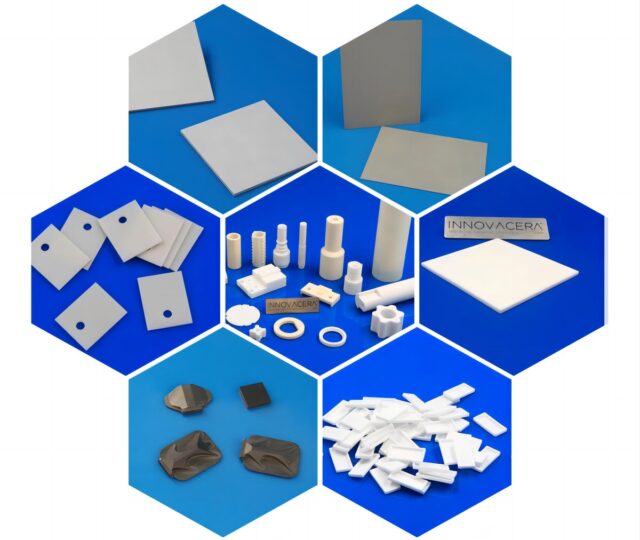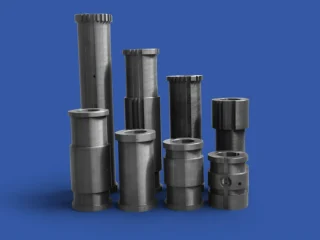There are many kinds of electronic packaging substrates, and the commonly used substrates are mainly divided into plastic packaging substrates, metal packaging substrates and ceramic packaging substrates. Plastic packaging materials usually have low thermal conductivity, poor reliability, and are not suitable for high requirements. Metal packaging materials have a high thermal conductivity, but the general thermal expansion coefficient does not match, and the price is expensive.

Ceramic substrates are commonly used for electronic packaging. Compared with plastic and metal substrates, ceramic substrates have the following advantages:
1. Good insulation performance, high reliability;
2. Low dielectric coefficient, high frequency performance;
3. Low expansion coefficient, high thermal conductivity;
4. Good air tightness, stable chemical properties, and a strong protective effect on electronic systems.
Therefore, it is suitable for aviation, aerospace, military and other high reliability, high frequency, high temperature resistance, good air tightness product packaging. Ultra-small chip electronic components are widely used in mobile communications, computers, household appliances, automotive electronics and other fields, and their carrier materials are usually packaged with ceramic substrates.
At present, the commonly used ceramic substrate materials for electronic packaging are alumina (Al2O3), aluminum nitride (AlN), silicon nitride (Si3N4), silicon carbide (SiC), boron nitride (BN), beryllium oxide (BeO).
The Following are the Application Areas of Various Material Substrates:
1. Alumina Ceramic Substrate
Although the Al2O3 ceramic substrate has a large output and a wide range of applications, its thermal conductivity is higher than that of silicon single crystals, which limits its application in high-frequency, high-power and ultra-large scale integrated circuits.
2. Aluminum Nitride Ceramic Substrate
The preparation process of AlN powder, the core raw material of AlN ceramics, is complicated, has high energy consumption, long cycle and high price. The high cost limits the wide application of AlN ceramics, so AlN ceramic substrates are mainly used in high-end industries.
3. Silicon Nitride Ceramic Substrate
The dielectric properties of Si3N4 ceramics are poor (dielectric constant is 8.3, dielectric loss is 0.001 ~ 0.1), and the production cost is high, which limits its application as an electronic packaging ceramic substrate.
4. Silicon Carbide Ceramic Substrate
The dielectric constant of SiC is too high, 4 times that of AlN, and its compressive strength is low, which is only suitable for low-density packaging, but not for high-density packaging. In addition to integrated circuit components, array components, laser diodes, etc., it is also used for conductive structural components.
5. Beryllium Oxide Ceramic Substrate
Its use is limited to the following aspects: heat sink of high-power transistors, heat sink of high-frequency high-power semiconductor devices, emission tube, traveling wave tube, laser tube, klystron, BeO ceramic substrate because of its high thermal conductivity and ideal high-frequency characteristics, sometimes used in avionics and satellite communications.
6. Boron Nitride Ceramic Substrate
BN has the advantages of high thermal conductivity, thermal conductivity almost does not change with temperature, small dielectric constant, good insulation performance, etc., and is widely used in radar window, high-power transistor tube base, tube shell, heat sink and microwave output window and other fields.
Performance of Ceramic Substrates of Various Materials:
| Performance | Performance | Unit | ALN | AI2O3 | BeO | SiC | BN | Si3N4 | |
| Content | % | 95 | 96.0 | 99.5 | 99.0 | / | 99-997 | / | |
| Density | g/cm3 | ≥3.32 | 3.72 | 3.90 | 2.52 | ≥3.03 | 1.6-2.0 | 3.26±0.05 | |
| Thermal Performance | Maximum service temperature |
℃ | 800 | 1700 | 1750 | / | 1300 | 900-2100 | / |
| Thermal conductivity | (W/m·K)20℃ | / | 24.70 | 30.00 | 230 | 90-110 | 35-85 | / | |
| (W/m·K)100℃ | 170 | / | / | / | / | / | / | ||
| Thermal Expansion | ×10-6℃(25~400℃) | 4.4 | / | / | / | 4.0 | 0.7~7.5 | 3.0-3.2 | |
| ×10-6℃(25~800℃) | / | 8.2 | 8.2 | 7.0-8.5 | / | / | / | ||
| ×10-6℃(20~100℃) | / | / | / | / | / | 1.5-2.8 | / | ||
| Electrical performance | Electrical resistivity(Ω*cm) | Ω·cm (25℃) | >1014 | >1015 | >1015 | ≥1014 | / | >1014->1013 | >1018 |
| Ω·cm (300℃) | / | / | / | ≥1011 | / | / | / | ||
| Dielectric constant | 1MHz(10±0.5)GHz | 8.9 | 8.3 | 8.7 | 6.9±0.4 | 40 | 4.0 | 9.4 | |
| Dielectric loss | (×10-4)(1Hz) | 3~10 | 0.0002 | 0.0001 | / | / | / | / | |
| Withstand voltage | (kV*mm-1) | 15 | 10 | 10 | 10 | 0.07 | 300~400 | 100 | |
| Mechanical property | Hardness(HV) | MPa | 1000 | 25 | 12 | 91-93(HRA) | / | 160-1800 | |
| Bending strength | MPa | ≥410 | 300~350 | 200 | ≥350 | 40~80 | 700-800 | ||
| Elastic modulus | GPa | 320 | 370 | 350 | 350 | / | 320 | ||
| Toxicity | / | (W/m·K)20℃ | No | No | Yes | No | No | No | |




 Enquiry
Enquiry